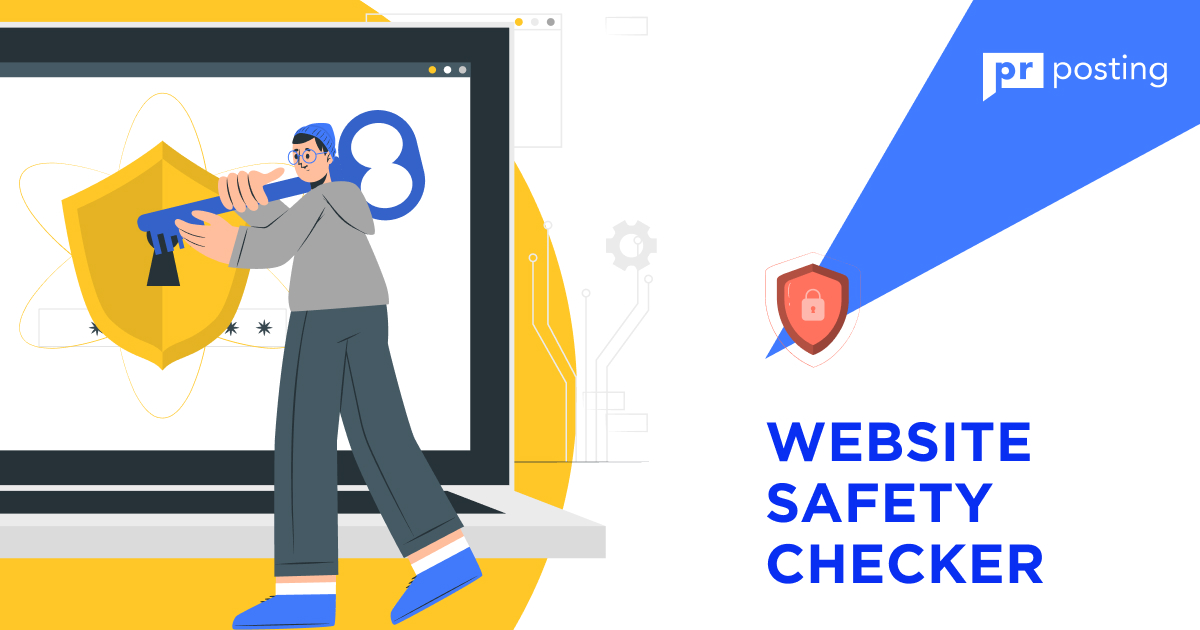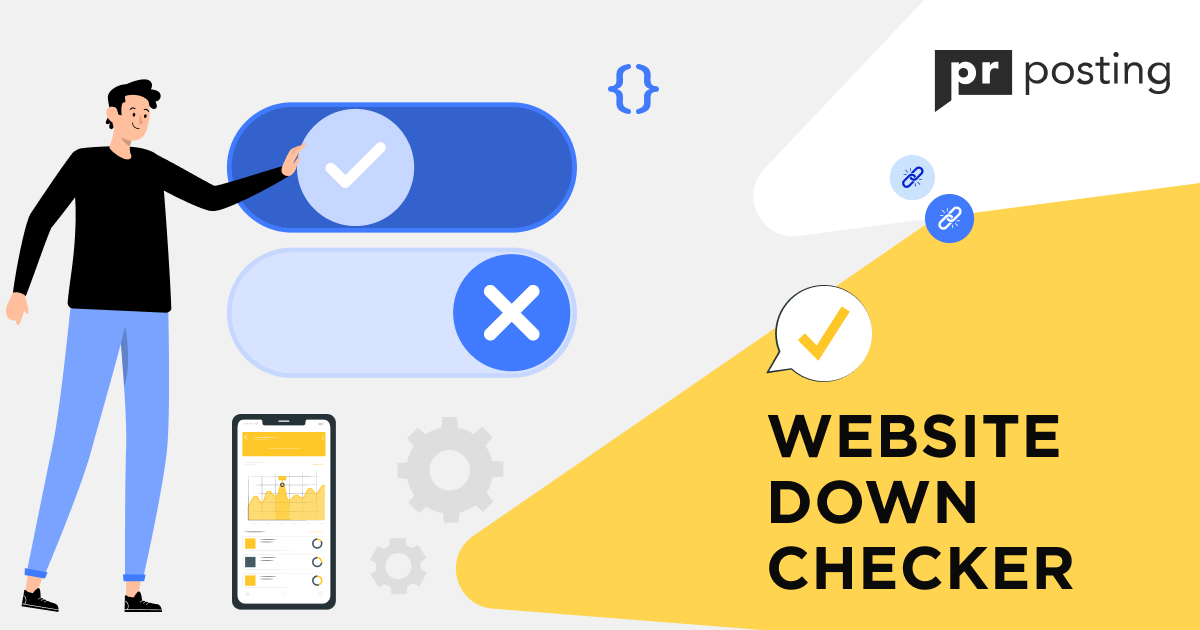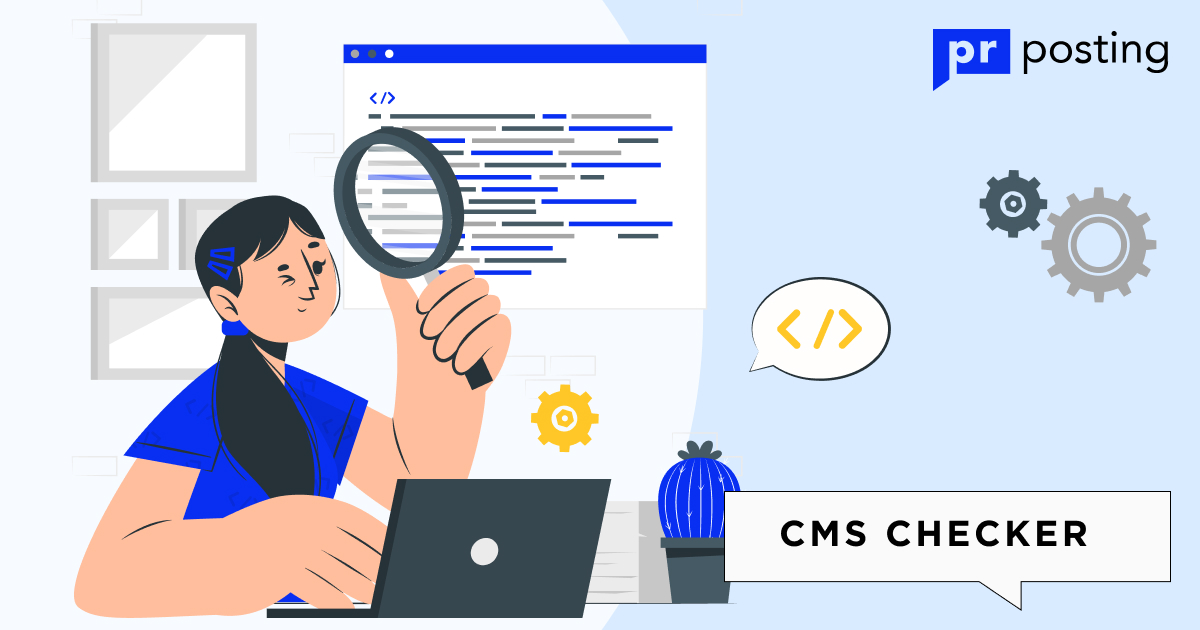Free Website Safety Checker

A regular website safety check should be on every webmaster’s to-do list. If you fail to detect the problem in time, the consequences can be devastating. Search engines put user experience first. They are ruthless towards websites with malicious content.
You can check the safety of a page or the entire resource using online scanners. However, none of them guarantees 100% accuracy. Sometimes, Google’s algorithms find a problem even when services don’t see it. In such cases, you will have to use as many specialized tools as possible.
What Is A Website Safety Checker Tool?
Website safety checker is a software solution for detecting viruses and malicious scripts. It comes in various formats. These are desktop software, online scanners, and server utilities. Hence, a webmaster can get up-to-date data about the project status using any of them.
Malware can lead to penalties from search engines. Google usually finds even minimal threats to users almost instantly and takes preventive measures. Therefore, webmasters should find the problem as soon as possible.
A complex algorithm for content analysis is at the heart of any tool for checking content safety. Some services check only the domain presence on the antivirus blacklist. However, this is not enough to ensure the project`s legality.
The best website safety checker tool should:
- take into account the data of antivirus databases;
- check the website presence on the Google Safe Browsing list;
- have content verification algorithms;
- scan all pages;
- provide advice on improving project protection.
You can easily find many online services in search engines. However, none of them is ideal. You can only find out whether this website is safe if you have access to the project files.
About Google Safe Browsing
Google Safe Browsing is an intelligent security system that protects billions of devices worldwide. It was launched in 2007. Since that time, it has been an integral part of the safe use of this search engine.
You needn’t install GSB as a plug-in or software on your computer. The technology is integrated into Chrome, Firefox, and Safari browsers. When a website is blacklisted by Google Safe Browsing, users see a danger warning instead of the resource page.
This tool was developed to protect users from losing personal data and blocking resources with harmful content. In most cases, it successfully recognizes the threat and protects users’ data.
But there are situations when GSB algorithms blacklist websites by mistake. Webmasters sometimes write about it on forums and try to solve the problem. However, this system operates almost flawlessly on a global scale.
The Importance of Website Safety Check
Many website owners do not pay attention to their resource protection. They occasionally check if the website is legit, and that is all. Hence, such an approach will not help to avoid problems.
If there is malicious code on the website for a certain time, Google Safe Browsing will find it. As a result, the project will lose traffic, positions, and audience trust. Most users will close the tab after seeing the danger warning.
Traffic and positions in organic search results may not be recovered for a long time, even after you delete all viruses. Therefore, it is better to protect the resource in the best way and not waste time fighting the consequences.
Installing a firewall, preventive security methods, file status monitoring, page content tracking, and other measures help to control the situation. You can check a resource with the help of scanners in a few minutes. However, this is only a small step in a long way.
A website hack can lead to:
- getting on the blacklist of antiviruses;
- loss of positions for a long time;
- active audience decrease;
- theft of users` data.
You should keep in mind that any problems are beneficial to your competitors. They will receive extra traffic, and even after deleting viruses, your website may not return to its previous positions.
Site owners should not only monitor whether the site is safe using Google Safe Browsing but also make every effort to protect users and their data.
How the tool works
Each website legit checker or a specific page security checker has its algorithms. Most of them use public data that can be found in the Google Transparency Report, antivirus databases, and other sources.
Some online scanners have their scripts to be installed on the server. This option is more beneficial because even the most powerful analyzer can make mistakes. At the same time, access to the source code allows you to analyze the project structure to the fullest extent.
If the service only audits the SSL certificate, it will be almost useless. The tool can be used for a relevant task. However, content security depends not only on the secure data transfer protocol.
Scanning Websites for Malware & Viruses
Every webmaster must analyze the resource profile for viruses and malware. The more often a webmaster performs such an analysis, the better. However, it is still necessary to take measures to protect the project.
The volume of negative consequences from malicious scripts can be different. For example, mobile redirects send smartphone owners to WAP subscriptions. Websites with such problems are blocked by Google Safe Browsing.
It is impossible to protect your resource against viruses on the server to the full extent. However, you can significantly reduce the risk of your project infection. To do this, you need to install special software that monitors the status of the files and warns about possible threats.
Checking Website Blacklist Status
Some webmasters are sure that there are only antivirus blacklists. However, this is not true. There are also spam domain databases and specialized resources that collect links to projects with malicious content.
To check if a site is blacklisted, you should use tools that can perform complex analyses. For example, SSL Trust uses deep data verification that covers over 90 different tests.
The presence of a site on a blacklist does not inevitably indicate problems. On the other hand, if the resource is in 3-5 databases of different scanners, a detailed analysis must be performed.
Detecting Security Issues
Identifying security issues is a good addition to scanning public databases for malicious sites. There may be such issues as free access to the administrative panel, downloading files without authorization, and other gaps in security algorithms.
Sometimes, even experienced webmasters make mistakes and forget about basic security measures. For example, WordPress is often hacked by downloading files with filename extensions that should be banned.
Identifying Outdated Software & Plugins
Vulnerabilities are periodically found in plugins and popular libraries. They help attackers gain access to the administrative panel and use the resource to carry out their tasks.
It is great when the scam website checker can detect an outdated JQuery version or any malicious plugins. Unfortunately, a small number of tools can really cope with this task.
SSL Checking
In 2023, any website should run on the secure HTTPS protocol by default. This is no longer a recommendation but a necessary attribute for normal ranking in search results.
SSL certificates may not work correctly. This problem leads to negative consequences with various dangers. For example, Chrome may display a notification that it is not recommended to visit the website because it has no secure connection.
There are no ideal resource security testing tools. You can get a true assessment of the project`s technical condition only with the help of a comprehensive check. Occasionally, even Google Safe Browsing makes mistakes. Hence, it’s better not to count on any specific safe website checker.
How to Check if Websites Are Safe
Webmasters must regularly perform website trustworthy checks. When users see a danger warning on a page, they simply go back to search results to find the necessary info on another page.
If it is a one-time security check, you can use any online checker. However, it is recommended to install specialized scripts for strengthening file protection, such as Bitdefender, on the hosting server.
As hackers can find vulnerabilities in any project component, the site protection system must be multi-tiered. For example, hacking often occurs because of late plugin updates for CMS.
You can check website safety using the following services:
- Google Transparency Report
- QUTTERA
- Sitechecker
- Virustotal
- Avast
You should keep in mind that checking the website security also includes the SSL certificate analysis. When the scanner grants the green light, there will be no problems with establishing a secure connection. However, there are also no guarantees of secure data transfer.
If the webmaster finds problems or malicious scripts using the website safety checker, they must fix them instantly. If search engines detect the problem earlier, they will impose penalties.
Factors to Help You Recognize a Hacked Website
It can be difficult to recognize a hacked website because sometimes the malware is activated only on certain devices. For example, hackers often set up mobile redirects that work on devices with 4G internet.
Security problems can be identified by a combination of factors in most cases. To do this, you should use 2-3 popular reliability website checkers and view their reports. If a site has critical security issues, you will see them immediately.
Signals indicating that the site has been hacked:
- Domain presence in black lists.
- When opening the page, you are redirected to another resource.
- Plenty of third-party ads.
- Notification that the device software needs to be updated.
- Pages in another language appeared in the search engine indexing.
There are also other markers, but in each case, they are individual. Before visiting the page, you needn’t perform a website trust check because modern browsers do this by default.
Site owners who have encountered viruses and the consequences of their actions should better ask for help from companies and private specialists. This is especially applicable if the project is monetized with the help of large advertising networks such as Adsense.
Tips to Ensure Website Security
You can protect your site from hackers only using a comprehensive approach. If you do not consider all the vulnerabilities, fraudsters will find a way to benefit themselves.
It is better to take measures to strengthen project security at the very beginning. The more audiences it manages to gain over time, the more attractive it will be to hunters for easy money.
There are many instructions for protecting sites on the Web. However, you should remember that the result depends greatly on your CMS. For example, WordPress is among the most popular content management systems, but it is very vulnerable.
That is why systems for protection at the server level are in demand. They can be integrated into the file system and monitor file updates. If the scanner finds malware, the project owner will be immediately notified.
Enable HTTPS
It will be difficult to check website reliability without a properly working SSL certificate. This component is vital for both users and search engine algorithms. If you count on organic traffic, it is better to spend time setting up a secure connection.
It can be difficult for novice webmasters to select between the large numbers of various types of certificates. However, the free Let’s Encrypt will be enough for basic tasks. Most hosting providers install it by default.
You can check the certificate stability using scanners. Please keep in mind that some pages may have problems with mixed content. Software for overall page scanning and fast issue checks such as Netpeak Spider will help in this case.
The presence of a secure protocol is also vital for increasing the link mass. Site owners are unlikely to agree to post a link to a website that runs on HTTP in 2023.
There are over 44,000 websites in the PRPosting database, and the vast majority of them use various types of SSL certificates. In your account at this service, you can quickly create a list of potential donors and discuss the agreement details.
Disable/Remove Unnecessary Plugins
Timely plugin updates can sometimes save your project’s reputation. If you check out the news about major site hacks, hackers use vulnerable plugins in most cases.
Server analyzers will help you to control the situation. They will notify you about problems even if there is no news about resource attacks in the media yet.
Some scanners find an outdated JQuery version while checking the site’s legality. However, this is not enough to make sure that the resource is always secure. You will need a tool for regular monitoring.
Backup Data Files
It is recommended to back up files once a day. Most hosting providers offer this feature for free, but you also need to store backups in cloud storage.
Moreover, don’t forget to create backup copies of databases. Sometimes, hackers add malicious code not to files but to MySQL tables. In this case, the scanners may not help.
You can quickly restore your website using backups. After it, you can track exactly which files the hacker changes and close the security gap.
Auto-Generate Passwords
Short passwords make hacking a website a cakewalk for attackers. To make this task difficult for them, you should use specialized plugins for CMS or password generators. You can google them and choose any of the offered tools.
For additional protection, you should also install two-factor authentication. Google Authenticator, which requires minimal settings, is the most suitable tool for this purpose.
Update Software Regularly
Timely updating of plugins, CMS, and additional scripts is a routine task that should be done regularly. Moreover, you need to follow the news on resources about the web security of specific CMSs. Sometimes, the malicious code appears in new versions of apps.
Site owners often install third-party components without checking their safety. This can lead to catastrophic consequences. Hence, you should not waste time on additional analysis.
Final words
A few webmasters know how to check if websites are safe, and this is really a problem. Therefore, you need to constantly monitor the technical condition of the resource to count on effective promotion in search engines and to gain the audience`s trust.
FAQ
What Is a Website Safety Checker Tool?
These are desktop programs, online checkers, and server analyzers that test out security problems. They recognize threats, find viruses, and check the presence of a website in the blacklists of various services.
Why Check the Website Security?
You should do it to protect against search engine sanctions and maintain your audience`s trust. Users hate to interact with dangerous resources, and search engines block them.
How Does the Website Legit Checker Work?
Most services use public databases such as antivirus lists. Some analytical platforms perform complex analyses using their algorithms.
More Like This

Website Down Checker

Must-Know Google Sheets Formulas for SEO





